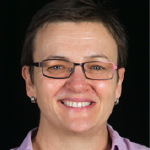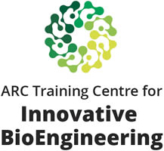
PROFESSOR
CYNTHIA WHITCHURCH
Professor, The ithree Institute
Core Member, ithree – Institute of Infection, Immunity and Innovation
Academic Leader Microbial Imaging Facility
Professor Cynthia Whitchurch’s research focuses on understanding the contributions and interplay of alternative bacterial lifestyles to infection and persistence and to exploit this knowledge to develop innovative approaches to combat infection. She has investigated various aspects of bacterial pathogenesis and biofilms for over 25 years and has held NHMRC CDA and SRF fellowships. She was awarded the prestigious 2016 David Syme Research Prize for best original research in biology in Australia during the preceding 2 years- one of only a handful of women to be awarded the prize and the first in over 30 years. She obtained her BSc (Hons I) in 1989 and her PhD in 1994 from the University of Queensland and undertook postdoctoral research at the University of Queensland and the University of California San Francisco. In 2004 she established her own research group in the Department of Microbiology at Monash University and in 2008 was recruited to the University of Technology Sydney where she currently leads a research team in the ithree institute and where she also established the Microbial Imaging Facility.
Research Highlight 1
We discovered that extracellular DNA (eDNA) is required for bacterial biofilm formation and facilitates the self-organisation of actively expanding biofilms.
These findings have promoted a paradigm shift in our understanding of biofilm biology and demonstrates novel roles for DNA in nature. Furthermore, enzymes that degrade eDNA are being explored to prevent and treat biofilms in infection and industrial settings.
Research Highlight 2
We discovered that the formation of the network of trails formed during biofilm expansion is attributable to the bacteria forging an underlying interconnected network of furrows.
RESULT
We have shown that the introduction of fabricated micro-furrows that cause the bacteria to follow these furrows inhibit the rate at which biofilms expand across silicone. This innovative approach could be adopted to inhibit the spread of infections along medical devices such as indwelling catheters without the need for antibiotics.
Research Highlight 3
We discovered that bacteria produce eDNA and membrane vesicles via an ‘explosive cell lysis’ mechanism.
RESULT
This new understanding of how bacteria produce shared resources produces opportunities to exploit to inhibit biofilm formation or as novel antibiotics.

